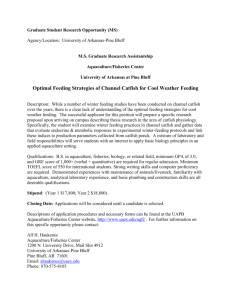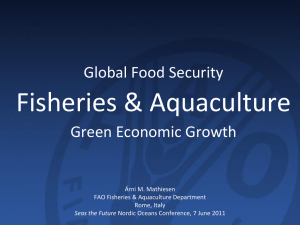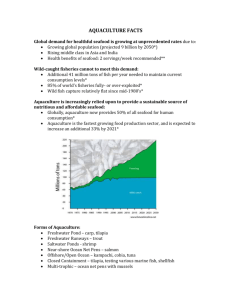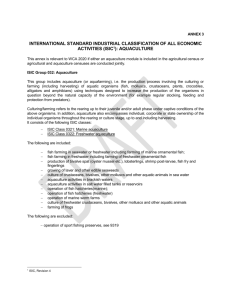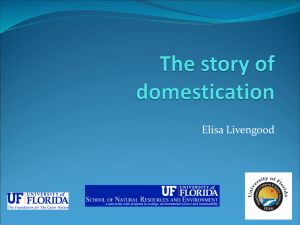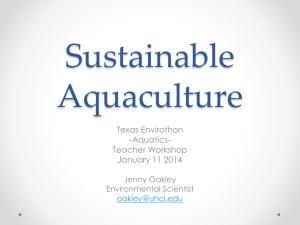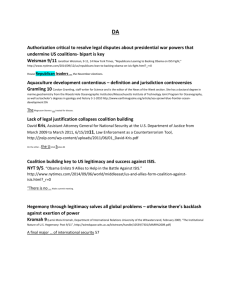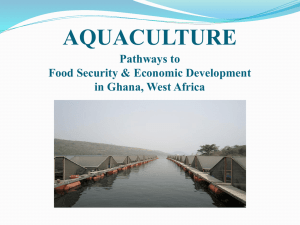CAT fish production
advertisement
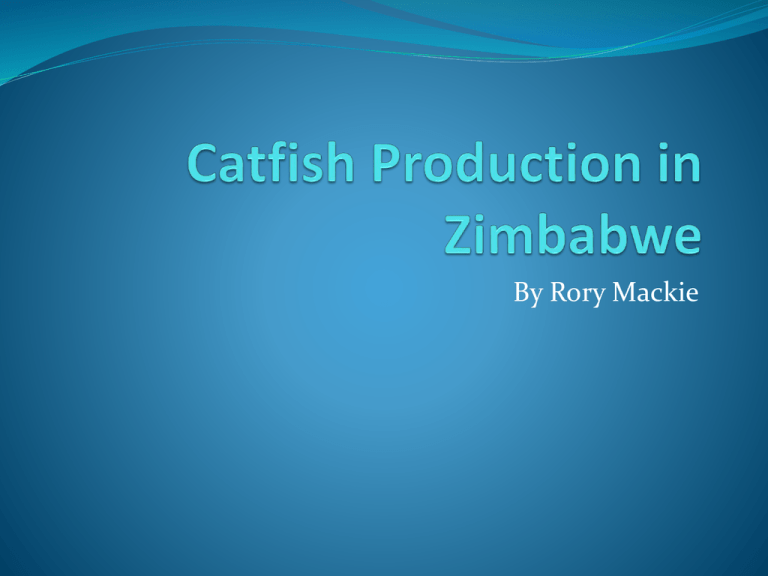
By Rory Mackie Overview Aquaculture Industry Overview The African Sharp-tooth Catfish Options for Zimbabwe Mr Muramba Conclusion Aquaculture: A Global Perspective What is Aquaculture? Aquaculture is the rearing of aquatic organisms in captivity Give a man a fish and you feed him for a day, Teach a man to fish and you feed him...... Only until the wild stock lasts, Teach a man to grow fish and you feed him for a lifetime (Aquaculture Innovations) Aquaculture Growth 1993 – 17.8 Million tons produced 2006- 51.62 Million tons Average growth of 8% p.a. Nigerian aquaculture produced 751 000 tonnes of fish of which: 80,000 tonnes were African Sharp tooth Catfish Doubles every 3 years Zimbabwean Aquaculture produced 3 to 4,000 tonnes, Bream only (Lake Harvest) 10,000 Tonnes of wild fish production (Kapenta) Figures: FAO 2009 and Aquaculture Zimbabwe Trust Why Aquaculture? Dwindling wild fish catches Increased demand for fish Growing world population Increased expendable income Greater demand for healthy white meat The African Sharptooth Catfish (Clarias Gariepinus) Catfish, Muramba or Barble Advantages The ULTIMATE aquaculture species Air breather – Can obtain o2 from the atmosphere Fast Growth - 6 Months to 1kg High stocking density – Up to 750kg/m3 in RAS Disease resistant – High tolerance to poor water quality High fecundity – 50,000 eggs/kg of female High dress out percentages – Over 50% Low labour demand, low water demand Storage – Can survive out of water for several days Options for Rural Zimbabweans Earth Ponds Advantages Cheap - Easy to build, minimal equipment required Low level of expertise – Minimal management Natural heating – Sun is for free Low risk – As compared to other aquaculture systems 15 Tons per Hectare * 150kg from a 10m x 10m pond (Bream 20 to 30kg’s) Feeding with a nutritional compete sinking pellet F.C.R of 1.8* Cost per Kg of Protein $1.44 (Cost of Feed 80c/Kg ) Fish can be dried and stored *Manual for the Commercial Pond Production of African Catfish in Uganda USAID and Fisheries Investment for Sustainable Harvest Mr Muramba Recirculating Air System Commercial production of Catfish fingerlings Commercial production of Catfish for sale as a food fish 15mx4m Insulated building 2 Labourers 1o Tonnes a month 100,000 Fingerlings a month Conclusion Test Case Results from Zimbabwe Education Courses Training
